What is the difference between mulberry and blackberry?
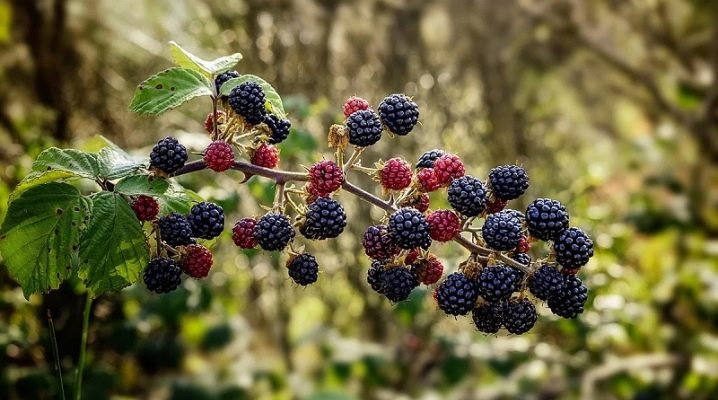
Blackberries and mulberries are a healthy delicacy that adults and kids alike eat with pleasure. Although the berries are similar in appearance, they differ in their botanical description, as well as in their properties and flavor characteristics.
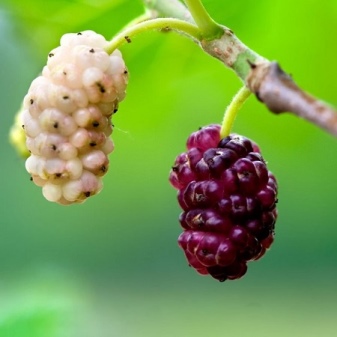
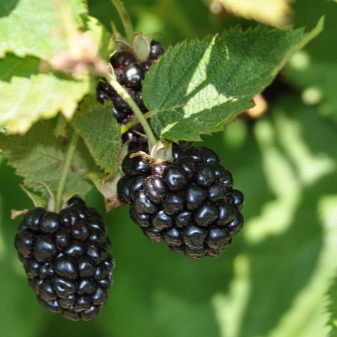
Similarities and differences in appearance
Mulberry has another name - "mulberry". The plant belongs to the Mulberry family. This genus has more than a dozen species. Wild trees grow in Eurasia, in northern Africa, in the southern regions of North America. Trees grow up to 15 meters high. Often, some specimens that grow in natural conditions can live up to 500 years.
Initially, these trees were used to grow silkworms on them, hence the other name. The succulent leaves of the mulberry tree were considered an exquisite dish for these insects. For convenience, such trees were grown in the form of bushes, preventing them from growing high, which greatly facilitated the care of silkworms. Currently, gardeners grow trees with berries of different colors on their plots. The most common are two types. These include trees with black and white berries. They differ not only in the color of the fruit, but also in the shade of the wood.
The homeland of the white mulberry tree is China. There, in the eastern regions, trees have been grown for about 400 thousand years. The plant was originally used for silk threads obtained from silkworms. The berries of the white mulberry tree can have a yellowish or pinkish hue, they are distinguished by a honey taste with a delicate aroma. For the growth of white mulberries, not only the southern regions are suitable, since the plant has good endurance and resistance to cold weather. The tree can easily overwinter in regions with an average temperature of 20-30 degrees below zero. The plant does not require special care, while giving a generous harvest.

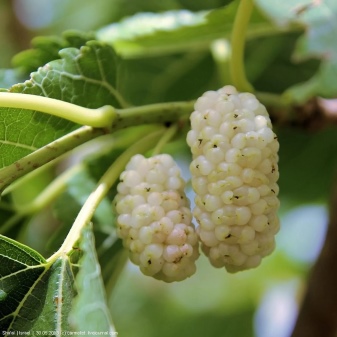
Persia is considered the homeland of black mulberry. This view is slightly different from the above. The tree has stiffer, toothed oval leaves, bark and shoots with a darker color. In appearance and structure, black mulberries are similar to blackberries or raspberries. The black mulberry tree can be attributed to southern plants; regions with a temperate climate are more suitable for growing trees. Thanks to the hard work of breeders, new, more resistant varieties are constantly being developed that can withstand low temperatures, up to 30 degrees below zero.
The plant has tasty and juicy fruits. They have a lot of sugar, acids, tannins and pectin are also present in the composition. Mulberry fruits are rich in essential vitamins. They contain proteins and carbohydrates. According to the presence of potassium in berries, mulberry is in first place among berry crops. Compared to the white mulberry, the black berries of the mulberry are larger. For a long time, the fruits of trees were famous for the presence of nutrients. They also have medicinal properties and are suitable for food for adults and children.
Blackberry (ozhina), unlike mulberry, is a semi-shrub. The plant grows in Eurasia, capturing the forest zone and forest-steppe, you can also find it in a mixed or coniferous forest, in the river floodplain. The plant grows in more northern regions than the mulberry tree, so you can see them together only in the garden or summer cottage. The most frequent neighbors of these crops are gardeners in Ukraine, Moldova, you can see them in the southern regions of Russia, in the Crimea.Blackberries are divided into 2 types - liana and dwarf shrub. Other names are "dewdrop" and "kumanika".
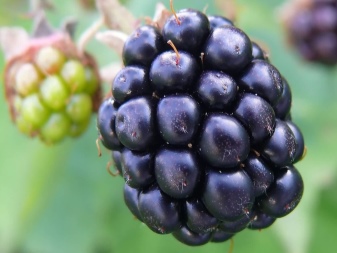
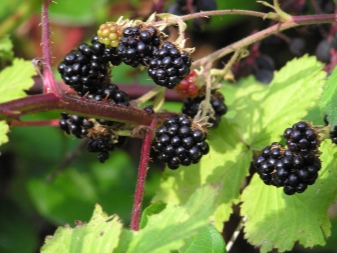
Blackberry characteristic:
- stem covered with thorns;
- perennial root system;
- there are pubescent leaves;
- blooms in white, collected in a brush;
- the fruit is a complex drupe.
Perennial plants grow in the form of a bush. They have erect branches or creeping branches, reaching a length of up to 4 meters. They often have thorns. Shrubs begin to bear fruit in the 2nd year, after fruiting, dying off occurs.
Blackberries (ogins) have pubescent, three- or five-fingered toothed leaves. A very beautiful flowering shrub begins in June and lasts until August. Fruit ripening occurs at the end of summer. It is removed from the bush when it is fully ripe, when the berry turns into a rich dark color. Dewdrop (curly species) grows with long stems that have thorns. The berries of the sundew are larger than those of the erect species, and the yield of the shrub is usually higher. Its fruits contain vitamins and antioxidants, berries contain a lot of nutrients, acids and minerals, and pectin is present.
Now there are about 200 varieties of this medicinal berry. Breeders are constantly creating new, more productive and winter-hardy varieties, without thorns.
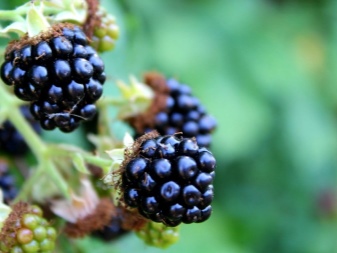
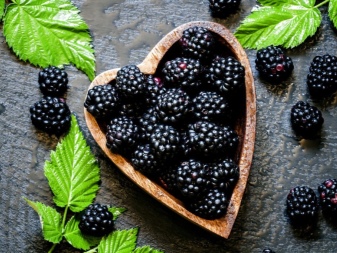
How do they differ in taste?
Although the fruits of the plants are similar in appearance, they are not similar in taste. The mulberry tree has tender, juicy, sweet and very aromatic fruits. The berries contain a lot of sugar, which affects the taste of the mulberry, and the fruits also contain a complex of vitamins, minerals and other elements necessary for the body. Mulberries have medicinal properties. Young mulberry leaves are also suitable for treatment. The fruits are used in cooking. They are used to make aromatic jams, syrups, compotes, and also freeze and dry.
Blackberries have a richer flavor and color. Outwardly, they resemble dark raspberries. Ripe blackberries are distinguished by a bright black-purple color, with a slight bloom. Their taste is sweet and sour. Due to the presence of salicylic, citric, malic and tartaric acids in the composition, the berries have a pronounced sourness. In overripe fruits, sourness is practically absent. Ripe berries begin to be eaten in July-August. These fruits are very tasty fresh, nevertheless they are used in cooking, for tinctures, wines, and various desserts.
Berries with blackberry leaves are often used as remedies for many diseases. They are fragrant and tasty, while they contain a lot of vitamins, useful elements and valuable substances.
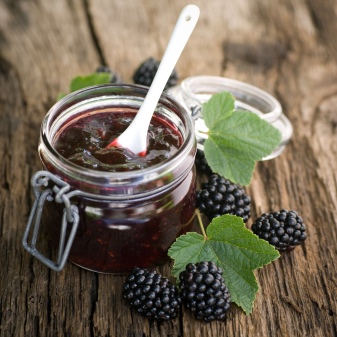
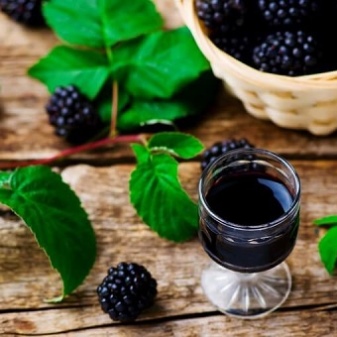
Comparison of other characteristics
The difference between the two plants is obvious.
- Mulberry Is a tall deciduous tree, while blackberries are a bush. It is, albeit a thorny, but picturesque shrub, with flexible shoots growing upward or creeping along the ground. Under natural conditions, such shrubs often form impassable thickets. Due to these properties, blackberries are often used as a hedge, planting instead of a fence.
- The fruits also differ in the strength of the structure. In ozhina, the berry is denser, which directly affects transportability and storage. The surface of the mulberry tree is very tender and soft, the berries are juicy and sweet. This culture is practically unsuitable for transportation. It is better to feast on such a berry by picking it straight from the tree. After eating mulberry, ink stains remain on the hands.
- Although the berries in these crops have an external similarity, they differ in shape and size. Blackberries and mulberries have similar drupes, but their sizes are different. Fruits of some varieties reach a length of up to 5 cm or more.
In addition, the berries are attached to the stem in different ways. The attachment point of the ozhina is deeply planted, like that of a raspberry, while in a mulberry tree it is on the surface. Mulberries have a tail that is usually not eaten.
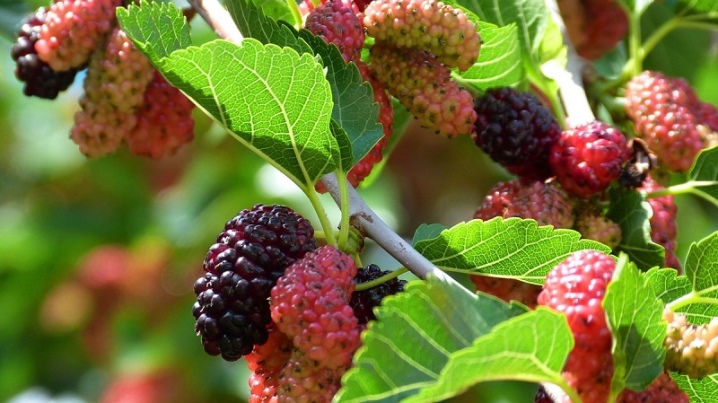













The comment was sent successfully.